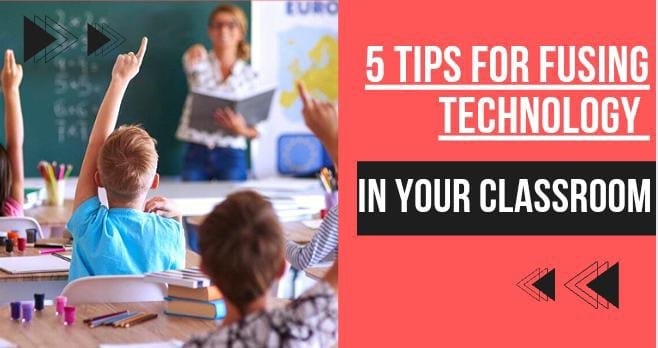Introduction
Technology is a massive part of our lives, and it’s no surprise it’s also infiltrating the classroom. Teachers need to find ways to integrate technology into their lessons while still keeping their students engaged and learning. Here are some tips for doing just that:
Please use apps and software: Many available apps can help teachers with their lessons. Use apps like Khan Academy or TED Talks to supplement your class material, or try out new software like Dragonbox to create custom quizzes and projects.
Keep things interactive: One way to keep students engaged is to use interactive tools like Google Earth or Minecraft. Have students explore different parts of the world or design their villages in Minecraft.
Use video clips as teaching tools: Videos can be a great way to teach complex concepts. For example, you could use videos about history or science to explain concepts like revolutions or genetics.
Embed multimedia content: Including multimedia content in your lessons can help engage your students more than text alone. Try embedding photos, videos, and blog posts from popular websites into your classes so your students can get a complete picture of what you’re teaching them.
How to Fuse Technology In Your Classroom
Regarding incorporating technology into the classroom, there are a few key things to remember. One of the most important is ensuring that whatever tools you choose are helpful for your students.
Another critical factor is ensuring you are using technology engagingly and effectively. To do this, it’s essential to have some guidelines in place.
Use Technology To Reinforce Learning Concepts
One of the best ways to use technology in your classroom is to use it as a reinforcement tool. By embedding learning concepts into games, animations, or other interactive content, you can ensure that your students remember what they’ve learned better than ever before.
Encourage Creative Expression Through Interactive Media
In addition to reinforcing learning concepts, another great way to use technology in the classroom is to encourage creative expression. By providing students with access to innovative tools and media, you can help them develop their ideas and skills.
Make Sure Your Technology Options Are Age-Appropriate
Like any other educational tool, ensure that your chosen technology options are age-appropriate for your students. This means ensuring that devices like iPads or Chromebooks are available in your class and selecting appropriate apps and websites for kids of all ages.
How To Use Them
- Start by determining what purpose technology can serve in your classroom. Can it be used as a tool to facilitate learning? Can it be used to help students keep up with their work? Once you have determined the purpose of technology in your classroom, think about how you can integrate it into the curriculum.
- Talk to students about what they want from technology in class and find out what tools and resources they already use outside type. This will help you decide which technologies best suit your classroom setting.
- Once you have selected the technologies you want to use, ensure they are accessible and user-friendly for your students. This means ensuring that devices are correctly configured and that instructions are available on how to use them.
- Finally, ensure that you are using technology in a way that is both beneficial and engaging for your students. This means using tech interventions and activities that foster creativity and problem-solving skills instead of simply delivering information passively from a computer screen or digital device.
Tips For Using Technology In Your Classroom
- To get the most out of your technology in the classroom, ensure you have a clear plan and understand your goals.
- Use technology to supplement teaching and learning, not to replace it.
- Utilize technology tools that best suit your student’s needs and interests.
- Remember that there is no “right” way to use technology in the classroom – what works for one student may not work for another.
- In today’s world, technology is omnipresent. Teachers must find ways to use it in their classrooms while keeping the educational environment intact. Here are some tips for doing just that:
- Use technology to enhance student engagement and learning. One of the most effective ways to integrate technology into the classroom is to use it as a teaching tool. For example, video games or other interactive content can help students learn new information more effectively. Additionally, incorporating digital tools into assessment can help teachers better gauge student progress.
- One of the biggest challenges facing educators when integrating technology into the classroom is ensuring that all students have access to devices and internet connectivity. Using platforms such as Skype or Google Hangouts, teachers can communicate with students from anywhere in the world. Additionally, online tools like Blackboard provide educators with abundant resources for Collaborative Learning projects and lessons.
- Keep track of technology usage in your class with tracking software. Many schools now offer software that logs how much time each student spends on different websites or applications throughout the day (eLearning Industry). This information can be used to understand better how students are spending their time and help direct instruction accordingly. Additionally, this data can generate reports illustrating how well students are progressing on specific course objectives or benchmarks.
Conclusion
If you’re looking to incorporate technology into your classroom, there are a few things to remember. EDUcoach has put together five tips that will help you get started. By following these guidelines, you’ll be able to integrate technology into your lessons in a way that is both effective and fun for your students. Let us know how you go!
With so much technology available, it can be hard to resist incorporating it into our classrooms. Firstly, make sure you use technology wisely and stay focused on it. More reliance on technology can lead to students feeling bored or disengaged, which is something we want outside our classrooms!
Secondly, keep class interaction alive by incorporating student-led activities and allowing for student questions and participation during lectures. And finally, always make sure that your class policies reflect the use of technology in the classroom – for example, do you allow devices such as cell phones and laptops at all times or only during designated periods? These tips should help you integrate technology into your teaching style without trouble!




Can you be more specific about the content of your article? After reading it, I still have some doubts. Hope you can help me.